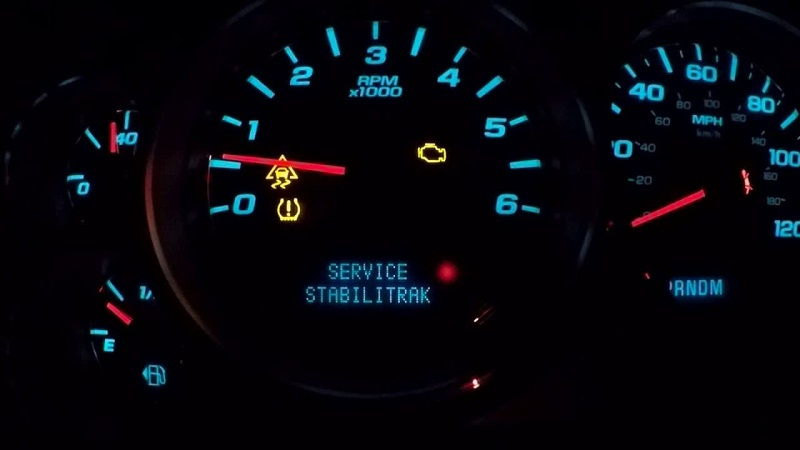This post contains affiliate links. This means I will make a commission at no extra cost to you should you click through and make a purchase [ “As an Amazon Associate, I earn from qualifying purchases.” ]. Read the full disclosure here.
Service Stabilitrak Chevy Cruze GuideMechanic.Com – Brief Overview Of The Issue With Service Stabilitrak In Chevy Cruze – The issue with Service Stabilitrak in Chevy Cruze has been reported by a number of car owners.
Stabilitrak is an electronic stability control system that is designed to help the driver maintain control of the vehicle in certain driving situations.
However, some Chevy Cruze owners have reported that they are experiencing problems with the Stabilitrak system. The Service Stabilitrak warning light has come on in many cases, and the system may not function properly.
This issue can potentially impact the safety of the vehicle, as the Stabilitrak system is an important safety feature.
See Also: Chevy Check Engine Light Flashing Then Stops
Chevy has issued some recalls and service bulletins related to this issue, but some owners have reported that the problem persists even after these fixes have been implemented.
It is important for Chevy Cruze owners who experience this problem to bring their vehicle to a qualified mechanic or authorized dealership for inspection and repair.
Service Stabilitrak Chevy Cruze

Causes Of Stabilitrak Issues
Chevy Cruze owners may experience Stabilitrak issues which can be quite frustrating. Stabilitrak is an electronic stability control system that helps the driver maintain control and stability of the vehicle in certain driving conditions.
When Stabilitrak issues are present in a Chevy Cruze, it can be caused by a number of issues. Some possible causes include a faulty wheel speed sensor, a malfunctioning steering angle sensor, damaged brake pads or rotors, faulty wiring or even a bad sensor.
The Stabilitrak system controls the yaw of the vehicle, meaning it controls the vehicle’s ability to turn and stay on its intended path.
See Also: P0014 Chevrolet Trax: Symptoms Of The Code
When one or more components of the system is not working properly, it can trigger the Stabilitrak system to turn off, which can make driving more difficult and even dangerous.
In some cases, the Stabilitrak warning light may come on, indicating that there is a problem that needs to be addressed.
If you are experiencing Stabilitrak issues in your Chevy Cruze, it is important to have a professional diagnose and repair the problem as soon as possible to ensure your safety on the road.
A qualified mechanic can run diagnostic tests to identify the source of the issue and fix the problem for you.
-
Malfunctioning Sensors
Malfunctioning sensors can create a myriad of problems in various systems. For instance, in DP (Dynamic Positioning) control systems, malfunctioning sensors can cause significant issues when operating within 150 meters of a platform.
Similarly, in the field of agriculture, malfunctioning sensors can result in inaccurate data and affect the effectiveness of precision farming techniques.
Additionally, malfunctioning sensors in smart home systems can lead to a variety of issues, such as lights turning on and off at unexpected times or temperature control systems malfunctioning.
Proper maintenance and regular calibration of sensors is essential to prevent malfunction and ensure reliable and accurate data.
-
Damaged Wiring Or Electronic Components
Damaged wiring or electronic components can be a serious safety risk in residential, industrial, or commercial settings.
Faulty or damaged wiring, for example, can cause electrocution or fires that may result in severe property damage and loss of life.
Damaged power cords, on the other hand, can lead to equipment damage, which can degrade life expectancy, particularly in electrical devices.
It is crucial to inspect wiring and electronic components regularly to identify any signs of damage, such as frayed wires or burned-out components, and take corrective measures promptly.
See Also: P0014 Chevrolet Orlando: Tips For Diagnosing And Fixing
Additionally, it is essential to handle electronic devices with care and ensure that they are properly installed, grounded, and connected, to prevent damage to the devices and the surrounding equipment.
By ensuring that electrical wiring and electronic components are intact and functioning correctly, one can minimize the risks of accidents and damage caused by damaged electrical components.
-
Issues With Traction Control Or ABS Systems
Modern cars are equipped with advanced systems that aid in driver safety and control. Traction control systems and anti-lock brake systems (ABS) are designed to prevent skidding or loss of control during braking.
However, these systems can sometimes malfunction or fail, leading to issues for the driver. For example, a faulty ABS system can cause the brakes to lock up, making it difficult to slow down or stop the vehicle.
Similarly, a traction control system that is not functioning properly can lead to loss of control on slippery roads.
Addressing these issues with the traction control or ABS systems can be crucial to maintaining safe driving conditions and avoiding accidents on the road.
It is important to regularly inspect and maintain these systems to ensure they are functioning properly, and to seek professional assistance immediately if any issues are detected.
-
Other Potential Causes
When considering the causes of a particular phenomenon, it’s important to explore all possibilities, including other potential causes that may not be immediately obvious.
Sometimes, the main cause of a problem or issue is not the most obvious one, and it requires careful consideration and analysis to uncover the underlying factors at play.
In many cases, other potential causes may be related to factors such as external conditions, indirect consequences of a particular action, or unexpected interactions between different elements within a system.
It’s important to consider all of these factors when trying to understand the root causes of a particular issue, as neglecting them can result in incomplete or inaccurate analyses.
By taking the time to explore other potential causes, one can gain a more nuanced understanding of a particular phenomenon, which can ultimately lead to more effective solutions and interventions.
Therefore, it’s important to approach any issue with an open mind and a willingness to consider all possible factors, no matter how obscure or unexpected they may seem at first glance.
Signs And Symptoms Of Stabilitrak Issues In Chevy Cruze

Stabilitrak is a system that helps improve vehicle stability and control during abrupt maneuvers. However, if there is an issue with this system in a Chevy Cruze, it can cause several signs and symptoms that can affect the overall driving experience.
One common symptom is the illumination of the Stabilitrak warning light and the Check Engine light on the instrument panel. This can indicate that there is an issue with the system that needs to be addressed.
Another sign of a Stabilitrak issue is difficulty steering the vehicle or a noticeable reduction in steering response.
Additionally, you may experience a vibration or pulsation in the brake pedal or steering wheel when trying to maintain control of the vehicle.
Finally, the vehicle may pull to one side or another instead of remaining straight during acceleration or deceleration.
If any of these signs and symptoms are noticed, it is important to have the vehicle inspected by a qualified professional to identify and repair any issues with the Stabilitrak system.
Warning Lights On The Dashboard
Sure, here’s an example paragraph on warning lights on the dashboard:Modern cars are equipped with a dashboard that displays a variety of gauges and warning lights.
See Also: P0463 Aveo: Common Causes of P0463
The warning lights serve as alerts for potential issues with the car, ranging from something as minor as a low gas level warning to something as serious as an engine malfunction.
Some common warning lights on the dashboard include the check engine light, oil pressure warning light, battery warning light, and tire pressure monitoring system (TPMS) warning light.
It’s important for drivers to be aware of what each warning light means and to take appropriate action if one turns on.
Ignoring a warning light can lead to more severe and costly problems down the line, whereas addressing the issue early on can often be resolved quickly and easily.
Difficulty Steering Or Controlling The Vehicle
Difficulty steering or controlling the vehicle can be a serious issue on the road. Whether driving a car, truck or motorcycle, having difficulty controlling the vehicle can lead to accidents and other dangerous situations.
There are many reasons why a driver may experience difficulty steering, such as problems with the power steering system, worn tires or suspension components, or even physical limitations.
In some cases, outdated or improper steering or suspension components may need to be replaced to ensure safe and precise vehicle handling.
Additionally, it is important for drivers to maintain proper seating and hand positioning to maximize control of the vehicle.
If you experience difficulty steering or controlling your vehicle, it is important to seek out the advice of a qualified mechanic or driving instructor to help identify and resolve any issues.
Reduced Traction Or Braking Ability
Reduced traction or braking ability can be a serious safety concern for any type of vehicle. Whether you are driving a car, riding a motorcycle, or even riding a bicycle, loss of traction or braking ability can make it difficult to control your vehicle and increase the risk of accidents.
In cars, issues such as low tire pressure, worn tires, or poor road conditions can lead to reduced traction, while worn brake pads or low brake fluid can lead to reduced braking ability
In motorcycles or bicycles, factors such as gravel, sand, or wet roads can also contribute to loss of traction, making it more difficult to corner or brake safely.
It is essential to regularly check and maintain your vehicle’s tires and brakes, and to adjust your driving habits to the road and weather conditions to ensure maximum safety while on the road.
- dump trailer for sale nearby - November 24, 2025
- Dump Trailer for Sale Ontario - November 23, 2025
- Dump Trailer for Sale Craigslist - November 22, 2025
